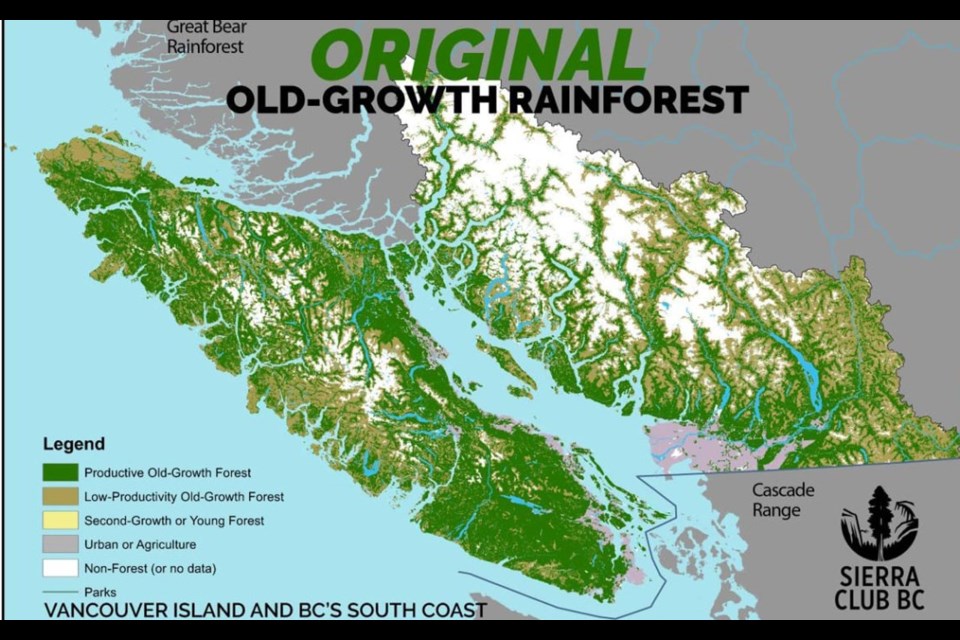We have been waiting since May for the province to release the findings of a report into the logging of our forests and in particular, our old-growth stands. After all, an overhaul to the province’s forestry rules was a central plank of the NDP’s election platform in 2017.
This week, we finally saw the report and the recommendations that came with it—and it looks like a good start.
But with so many of our ancient trees and forests in jeopardy, this is no time for the province to drag its feet on implementing all the recommended changes in the report. According to government statements, it will only be acting on some of them immediately with a three-year timeframe for the rest. A lot can happen in that time—including elections.
“Our initial assessment is that the independent old-growth panel’s recommendations offer a blueprint to safeguard B.C.’s endangered old-growth forests within three years,” said Sierra Club BC senior forest and climate campaigner Jens Wieting in a release.
“While we welcome these first steps, what’s missing from today’s announcement is a commitment to implement all of the report’s recommendations with full funding.”
Changes will impact those who work in the sector, obviously, so funding is a key component of making this a reality—a significant ask in these COVID-19 times.
But the importance of old-growth to the culture of First Nations, to our biodiversity, to tourism and to the environment has been overlooked for too long. (The term old-growth in B.C. means trees that are generally 250 years or older on the coast and 140 years or older in the Interior.)
The report states that the government will defer logging in several at-risk areas totalling over 350,000 hectares—200,000 hectares of which is old-growth forest. And it tells us that work is also underway to protect up to 1,500 exceptionally large, individual trees under the Special Tree Protection Regulation. The ministry said this supports a 2019 commitment to develop a permanent approach to protecting big, iconic trees. (About time. Nine in 10 British Columbians support taking action to defend old-growth and want the government to keep its election promise, a recent poll commissioned by Sierra Club shows.)
About 23 per cent of the province’s 13.2 million hectares of old-growth forests are protected in national and provincial parks, wildlife habitat ranges, regional water supply sheds, old-growth management areas and other areas, according to the province. About 3.75 million hectares, 27 per cent of the old growth, may be harvested.
According to the Sierra Club, 140,000 hectares of old-growth forests are logged each year along the B.C. coast and in the Interior (that’s, at minimum, 560,000 logging trucks of trees).
Have you walked in these forests, even the small stand at (currently closed due to COVID) Cathedral Grove, a park protecting an endangered ecosystem of Douglas fir near Port Alberni on Vancouver Island? Or what about the old-growth at Avatar Grove, the Carmanah and Walbran valleys or Clayoquot Sound, or along the West Coast Trail? Standing amongst these towering giants is awe-inspiring, spiritual even—they are amongst the largest, oldest living organisms that have ever existed. We have a responsibility to protect them.
These forests hold, per hectare, more carbon than even the Amazon rainforest, says Ken Wu, who has been fighting to protect them for decades with the Endangered Ecosystems Alliance.
Said Torrance Coste, the national campaign director for the Wilderness Committee: “Old-growth forests are non-renewable.
“We can’t rebuild healthy, sustainable rural economies around finite resources that are already heavily depleted. The reality is the future of forestry in B.C. is the management and use of trees planted by humans.
“Few things are as important to B.C., ecologically and economically, culturally and spiritually, as healthy forests.”
We should also be protecting our old-growth forest from logging right here in Whistler, but we are trapped in some Machiavellian labyrinth under provincial logging regulations. (See, “Cheakamus Community Forest reveals harvest plans for 2020,” Pique, Dec. 21, 2019.)
I think it’s outrageous, actually.
Tomorrow, Sept. 18, we all have a chance to show our support for old-growth, as Whistler is joining communities across the province to host a Forest March. The walk will start at Lost Lake Park Beach at 1 p.m. with groups marching (physically distancing, wearing masks) on separate routes to the village. Get your marching shoes on.




